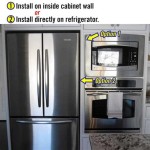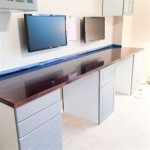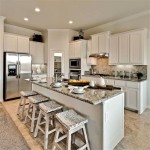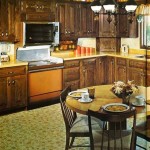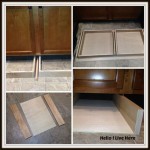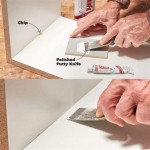Installing Toe Kick Boards in Kitchen Cabinets: A Comprehensive Guide
Toe kick boards, also known as kickboards, are essential components of kitchen cabinetry. They are the recessed boards installed at the base of the cabinets, providing a finished look, protecting the cabinet bases from damage and moisture, and creating a comfortable recess for standing while working at the counters. Installing them properly ensures both the aesthetic appeal and the longevity of the kitchen installation. This article details the process of installing toe kick boards, outlining the necessary tools, materials, and step-by-step instructions for a professional-looking result.
The primary function of toe kick boards transcends mere aesthetics. By creating a recessed space at the cabinet base, they allow individuals to stand closer to the countertop without bumping their toes, improving ergonomics and reducing strain during prolonged kitchen tasks. This design feature is particularly important for individuals with back problems or those who spend significant amounts of time preparing meals. Furthermore, toe kick boards act as a barrier against spills and moisture, preventing water damage to the cabinet bases, which are often constructed from less water-resistant materials like particleboard or MDF. They also prevent the accumulation of dust and debris under the cabinets, contributing to a cleaner and more hygienic kitchen environment.
Before commencing the installation process, a comprehensive assessment of the existing cabinet structure is crucial. This involves inspecting the cabinet bases for any signs of damage, unevenness, or structural weaknesses. Addressing these issues preemptively ensures a stable and level surface for the toe kick boards, preventing future problems such as sagging or misalignment. In addition, careful measurement of the required toekick height and length is essential. Standard toe kick height is typically 4 inches, but variations may exist based on design preferences or specific cabinet configurations. Precise measurements are critical to achieving a seamless and visually appealing integration of the toe kick boards with the overall kitchen design.
Key Point 1: Preparation and Materials
Proper preparation is paramount to a successful toe kick board installation. Gathering the necessary tools and materials beforehand streamlines the process and minimizes potential delays. The essential tools include a measuring tape, a level, a pencil, a circular saw or miter saw, a drill or impact driver, a stud finder, and a set of wood screws. A countersink bit can also be useful for creating clean, flush screw holes. Personal protective equipment, such as safety glasses and gloves, is also important. The materials required include the toe kick boards themselves, which should be constructed from a durable material like plywood or hardwood, and shims for leveling if the floor is uneven. Construction adhesive can also be used to provide additional bonding strength between the toe kick boards and the cabinet bases.
The selection of materials for the toe kick boards is a critical decision that impacts the overall durability and aesthetic appeal of the finished kitchen. Plywood is a cost-effective option that offers good strength and stability, particularly when moisture-resistant plywood is selected for areas prone to spills. Hardwood, such as maple or oak, provides a more premium look and is highly durable, making it a suitable choice for high-end kitchens. The chosen material should also be compatible with the existing cabinet finishes, ensuring a cohesive and visually harmonious design. For example, if the cabinets are painted white, the toe kick boards should also be painted white to match. Alternatively, a contrasting color can be used to create a visually striking accent.
Before cutting the toe kick boards, meticulous measurement is essential. Measure the length of each cabinet run where the toe kick board will be installed, accounting for any corners or obstructions. Use a measuring tape and a pencil to mark the cut lines on the toe kick boards. When cutting the boards, use a circular saw or a miter saw to ensure clean and accurate cuts. Exercise caution when using power tools, and always wear safety glasses to protect the eyes from flying debris. It is also advisable to cut the boards slightly longer than needed, allowing for minor adjustments during the installation process. Any excess material can be trimmed off later with a utility knife or a sanding block.
Key Point 2: Installation Process
The installation process begins with leveling the base of the cabinets. Use a level to check the floor along the cabinet run. If the floor is uneven, use shims to create a level surface for the toe kick boards. Place the shims under the cabinet bases where needed, and check the level again. Once the cabinets are level, secure the shims in place with construction adhesive or small wood screws. This step is crucial for preventing gaps between the toe kick boards and the floor, ensuring a clean and professional-looking finish.
With the cabinets leveled, the toe kick boards can be attached. Apply construction adhesive to the back of the toe kick boards, along the edge that will contact the cabinet bases. Position the toe kick boards against the cabinet bases, aligning them with the floor and the edges of the cabinets. Use wood screws to secure the toe kick boards to the cabinet bases. Drill pilot holes before driving the screws to prevent the wood from splitting. Space the screws evenly along the length of the toe kick boards, typically every 12 to 18 inches. Use a countersink bit to create recessed screw holes, allowing the screw heads to sit flush with the surface of the toe kick boards. This creates a smooth surface that can be easily painted or finished.
For cabinets with a recessed toe kick space, the toe kick board is fitted inside the recess. For cabinets without a defined recess, the boards may be flush with the cabinet front, or slightly recessed depending on the desired look. Ensure the boards are square and plumb during installation. If securing to cabinet legs, use a stud finder to locate the legs through the cabinet panels. Use appropriate length screws to securely attach the toe kick board to the legs without going through the other side. Once the toe kick boards are properly attached, remove any excess adhesive with a damp cloth.
Key Point 3: Finishing and Detailing
After the toe kick boards are installed, the final step is to finish and detail them. This includes filling any screw holes with wood filler, sanding the surfaces smooth, and applying a primer and paint or stain. Wood filler is used to conceal the screw holes and any minor imperfections in the wood. Apply the wood filler with a putty knife, and allow it to dry completely according to the manufacturer's instructions. Sand the filled areas smooth with fine-grit sandpaper, blending them seamlessly with the surrounding surfaces.
Once the surfaces are smooth, apply a primer to the toe kick boards. Primer helps to create a uniform surface for the paint or stain, improving adhesion and preventing the color from bleeding through. Choose a primer that is compatible with the type of paint or stain you will be using. Apply the primer evenly with a brush or roller, and allow it to dry completely according to the manufacturer's instructions. Sand the primed surface lightly with fine-grit sandpaper to create a smooth base for the final finish.
Apply the paint or stain to the toe kick boards. Choose a paint or stain that matches the existing cabinet finishes or complements the overall kitchen design. Apply the paint or stain in thin, even coats, allowing each coat to dry completely before applying the next. For a more durable finish, consider applying a clear topcoat. This will protect the paint or stain from scratches and scuffs, extending the life of the toe kick boards. Once the paint or stain is dry, inspect the toe kick boards for any imperfections. Touch up any areas as needed, and allow the finish to cure completely before using the kitchen.
In summary, the installation of toe kick boards is a relatively straightforward process that can significantly enhance the appearance and functionality of kitchen cabinets. By following careful measurements, selecting appropriate materials, and adhering to the correct installation techniques, a professional-looking result can be achieved. These toe kick boards not only improve the aesthetics of the kitchen but also protect the cabinets from damage, creating a more comfortable and efficient workspace.

How To Install Toekick In Your Kitchen 2024

How To Install Toekick In Your Kitchen 2024

Adding Toe Kicks A Window Sill Young House Love

How To Make Cabinet Toe Kicks Stonehaven Life

How To Add Decorative Toe Kicks Your Kitchen Cabinets Jenna Sue Design

How To Build Under Cabinet Drawers Increase Kitchen Storage Diy Family Handyman

Install Toe Kick Yourself Diy Installation For Kitchen

Do You Need Toe Kick Trim Or Molding In Your Kitchen

How To Install Toe Kick Boards For Kitchen Cabinets Hunker

Adding Toe Kicks A Window Sill Young House Love
Related Posts

